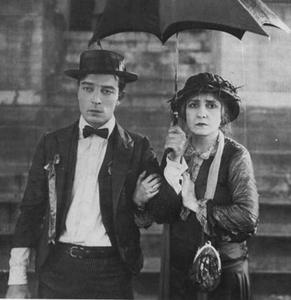One of the great pleasures of making Experimental Conversations was being in a position to film artists and critics in the process of thinking. To observe someone truly thinking as they speak is a moving and rare enough privilege. This ability to experiment in a conversational situation is analogous to what experimental film and video artists do in their daily practice: to push forward without pre-conceived idea or prepared answers. At the polar opposite of Hollywood where everything is pre-programmed to ensure that the audience gets again exactly what it wanted last time, experimental filmmaking is inherently radical because it avoids pre-existent solutions, pre-established forms, pre-determined meanings. Just like thinking on your feet, experimenting with a medium involves delving into unlocatable but creative zones, drawing on other spaces, those that can’t be identified until you go there.
All this while never losing sight of the inroads made by your predecessors and peers. In this sense, the Conversations of the title would also be between art-works of different times and geographies. Again, at the other extreme to Hollywood, the ethics of the experimental filmmaker is easily observed, a simultaneous commitment to “a legacy your work is made in relation to” (Gerard Byrne) and to multiplying the possibilities for perception and sensation of life in its most rich and raw state, even if it means finding new roads of access to “the most archaic, primal, originary sensations” (Philippe Grandrieux). The only way to extend perception is for artists to explore every potentiality of the medium they work in, and the experimental filmmakers interviewed here (and their illustrious predecessors in the experimental tradition, some of whose work can be seen in the complementary programme of great short experimental films) display an extreme variety of approaches to this task: for example, the camera-less cinema of Stan Brakhage and Vincent Deville; the found-footage films of Peter Tscherkassky, Augustin Gimel, Artavazd Pelechian and Deville again; the apocalyptic poetry of Godard or Grandrieux; the specially prepared lenses and filters used by Sokurov, Patrick Bokanowski and Clare Langan; or those who turn narrative conventions on their head (Tex Avery, Grandrieux, Duras, F.J. Ossang, Vivienne Dick). One of the main goals of this documentary is to look closely at what Irish artists who work with the moving image are doing and how it compares with their peers across Europe.
It seems clear that the work is on a par with anything being created elsewhere and that the artists share similar concerns and problems (thinking more conceptually has meant thinking more globally). For example the question of performance and the filming of bodies has always been a preoccupation of experimental filmmakers and it’s notable that both Vivienne Dick (with Lydia Lunch and Pat Place) and F.J. Ossang (with Joe Strummer, seen here in a wonderful clip from Docteur Chance) have found in the rock ’n’ roll performer a way of bypassing the need for trained actors. Experimental Conversations then, cacophonous conversations or the art of forging connections and alliances across boundaries of all kinds: other spaces, other times.All this while never losing sight of the inroads made by your predecessors and peers. In this sense, the Conversations of the title would also be between art-works of different times and geographies. Again, at the other extreme to Hollywood, the ethics of the experimental filmmaker is easily observed, a simultaneous commitment to “a legacy your work is made in relation to” (Gerard Byrne) and to multiplying the possibilities for perception and sensation of life in its most rich and raw state, even if it means finding new roads of access to “the most archaic, primal, originary sensations” (Philippe Grandrieux). The only way to extend perception is for artists to explore every potentiality of the medium they work in, and the experimental filmmakers interviewed here (and their illustrious predecessors in the experimental tradition, some of whose work can be seen in the complementary programme of great short experimental films) display an extreme variety of approaches to this task: for example, the camera-less cinema of Stan Brakhage and Vincent Deville; the found-footage films of Peter Tscherkassky, Augustin Gimel, Artavazd Pelechian and Deville again; the apocalyptic poetry of Godard or Grandrieux; the specially prepared lenses and filters used by Sokurov, Patrick Bokanowski and Clare Langan; or those who turn narrative conventions on their head (Tex Avery, Grandrieux, Duras, F.J. Ossang, Vivienne Dick). One of the main goals of this documentary is to look closely at what Irish artists who work with the moving image are doing and how it compares with their peers across Europe.

No hay comentarios:
Publicar un comentario